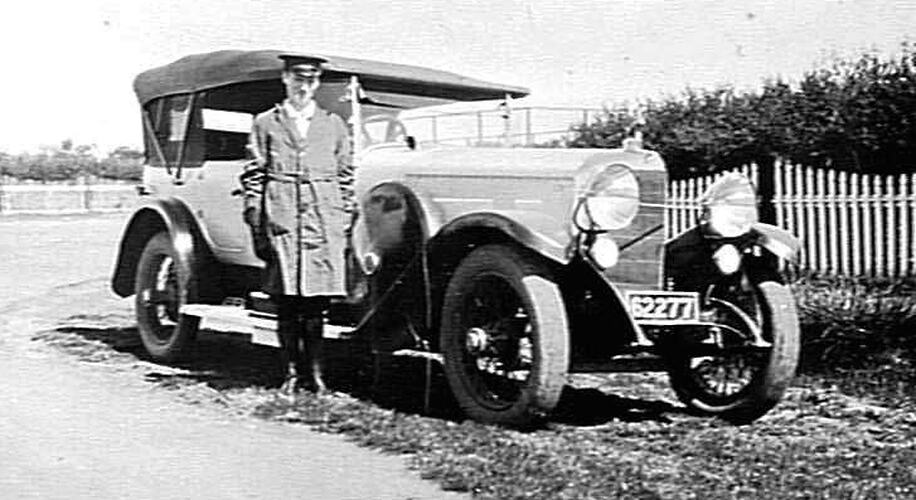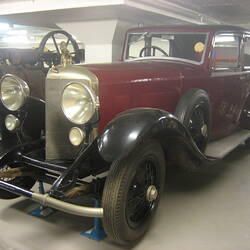Graf & Stift was formed in 1902 in Vienna when three Graf brothers were joined by Wilhelm Stift. In common with many early motor firms the Graf brothers had made bicycles and then branched out into motor car production in the 1890s. Their first car was a small machine using a single-cylinder De Dion engine built to a design by Josef Kainz. It incorporated front wheel drive and was one of the first motor cars with this feature. A young Ferdinand Porsche inspected the car and was much impressed. Wilhelm Stift had previously built the Celeritas, a small two-cylinder vehicle.
The first vehicle to carry the Graf & Stift name was produced in 1907 when the company name was changed to 'Wiener Automobilfabrik AG vorm Graf & Stift'. The firm specialized in large, well appointed vehicles for wealthier clients but also produced trucks from 1909. Graf & Stift cars were expensive and much favoured by Austro-Hungarian royalty. Archduke Franz Ferdinand and his wife were assassinated in Sarajevo in 1914 while riding in an open-bodied Graf & Stift car, an event which precipitated a chain reaction of military mobilisation leading to the outbreak of the First World War. The firm produced trucks for the Austrian Army during the First World War.
After the First World War, a range of four, six and eight cylinder vehicles appeared with the top of the range SP 8 becoming known as 'the Austrian Rolls-Royce'. These cars featured a distinctive lion sculpture as a radiator mascot. In 1927 Graf & Stift absorbed Automobilfabrik Perl AG, an Austrian maker of small cars. From 1934, Graf & Stift built Citroen vehicles under licence and German Ford V8 cars under the GrafFord name. The company produced motor cars until 1938 when Austria became part of Germany as a result of the 'Anschluss'.
During the Second World War the company built the Raupenschlepper Ost, four-ton tracked vehicle for the Wehrmacht. After 1945, as Graf & Stift Automobilfabrik AG the firm manufactured a range of trucks along with bus and tram bodies. The firm merged with OAF in 1970 and remains in business producing commercial vehicle bodies as 'Osterreichische Automobilfabrik OAF-Graf & Stift AG' in Vienna.
References:
Industrial & Technological Museum, Annual Report, 1938, p.82.
Science Museum of Victoria, Report of Activities, Centenary Issue, 1969-70 & 1970-71, p.18.
"Fortune in Oddities Lies Under Melbourne's Museum. Only Spiders Ride in this £5,000 Car", The Argus Magazine (Melbourne), 30 May 1952, p.3, from http://nla.gov.au/nla.news-article23194184.
G.N. Georgano, The Complete Encyclopedia of Motorcars 1885 to the Present, George Rainbird Ltd, London, 3rd edition, 1982, pp.282-283.
More Information
-
Keywords
-
Authors
-
Article types

